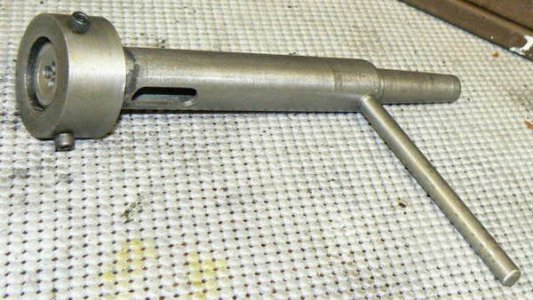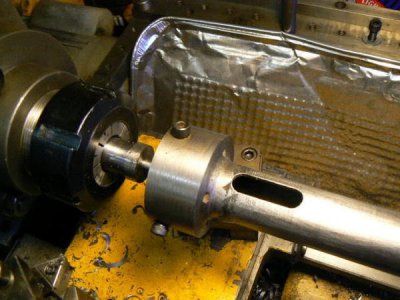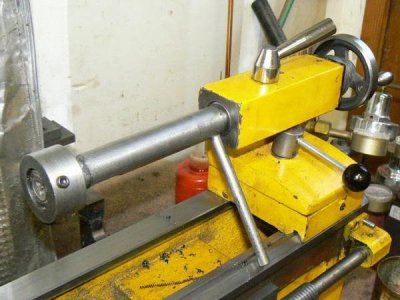Would classify myself as a moderately experienced beginner in the machine shop. Looking to make a jig to for threading barrels and the like. I need to make a 1" blind hole approx 1/2" deep to hold dies that would be secured by cap or set screws using my lathe. Right now I am using a 1/2"x28 die in a hand threading handle and using the tailstock to press the die itself against the item to be threaded. Was shown this by a more experienced machinist and it actually has worked fine for me. I'd like something a little more precise, though, to hold the die using something in the tailstock to align. I have tried cutting the threads using the lathe alone - works fine but the threading die is quicker.
Lathe is the usual import 12 x 36. Have 3 & 4 jaw chucks, Shars QCTP, HSS and carbide cutters, cheap 1/2" round boring bar set and head, more or less the usual stuff. Also have a Jet JDM-15 mill/drill, 6" rotary table, boring bar head, and various collects and end mills. Largest drills I have are Harbor Freight Silver and Deming that I believe go to 3/4". Not sure if they are any good but I do have a good drill sharpening setup.
Materials on hand are 1.5" 12L14 and some 3" aluminum round stock, alloy uncertain, plus brass in various diameters.
I also have a 4 jaw chuck for the rotary table but am uncertain how to attach. The table has 3/8" tee slots, and the back of the chuck (no backing plate) has four drilled, threaded holes that look to be 1/4" (6 mm?). I could easily cut the blind hole on the mill IF/WHEN I figure out how to mount the chuck on the rotary table. Thinking I need to make a backing plate of some sort for mounting the chuck.
I know that if I pondered this long enough I will come up with something but thought I'd ask the more experienced here how they would make the hole. Thanks in advance.
Steve
Lathe is the usual import 12 x 36. Have 3 & 4 jaw chucks, Shars QCTP, HSS and carbide cutters, cheap 1/2" round boring bar set and head, more or less the usual stuff. Also have a Jet JDM-15 mill/drill, 6" rotary table, boring bar head, and various collects and end mills. Largest drills I have are Harbor Freight Silver and Deming that I believe go to 3/4". Not sure if they are any good but I do have a good drill sharpening setup.
Materials on hand are 1.5" 12L14 and some 3" aluminum round stock, alloy uncertain, plus brass in various diameters.
I also have a 4 jaw chuck for the rotary table but am uncertain how to attach. The table has 3/8" tee slots, and the back of the chuck (no backing plate) has four drilled, threaded holes that look to be 1/4" (6 mm?). I could easily cut the blind hole on the mill IF/WHEN I figure out how to mount the chuck on the rotary table. Thinking I need to make a backing plate of some sort for mounting the chuck.
I know that if I pondered this long enough I will come up with something but thought I'd ask the more experienced here how they would make the hole. Thanks in advance.
Steve




